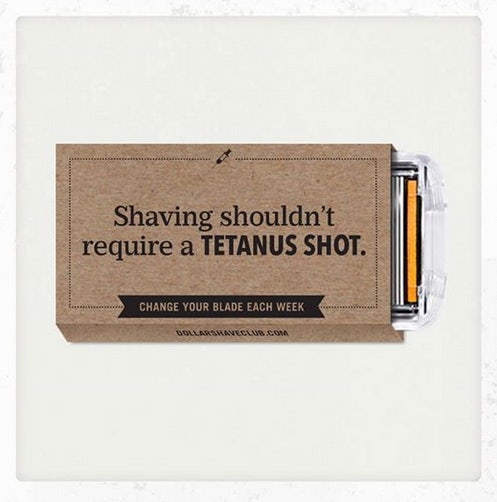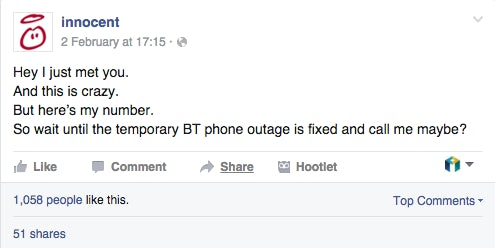‘Micro content’ is a communication method that’s been gaining in popularity in recent years. Commonly understood to be a social tool, it’s a concept that has developing since the early 2000s, but one which, arguably, we’re not making as much as we could of – yet.
By user experience expert Jakob Nielsen’s definition, micro content is a small group of words which can be skimmed by the reader to understand the wider message of the article.
Though written in 1998, Nielsen’s definition still has a lot of value – which I’ll come back to. But since that time, the way we use the term has evolved and the rise of social media has been a huge contributor to this. In defining what micro content is (or should be) today, let’s take a look at how it has been used to date.
A social media revolution?
Micro content in its current form was born of the popularity social media. Social media gave marketers the opportunity to speak to their followers directly, on a pseudo-one-to-one level, but long form articles or whitepapers weren’t capturing the attention of the constantly moving social audience.
Savvy brands recognised the marketing potential of social media and began investing in smaller pieces of content which could be easily ‘digested’ (and with it, the potentially cringe-worthy term ‘bite sized content’ was born). Cue things like tips, horoscopes and short video clips taking over our social feeds; micro content was here and it was good!
As mobile use has grown, so too has the need to improve on the way we communicate with our audiences in this ‘bite-sized’ manner. We’re no longer constrained simply by the amount of time a user has, but also by the size of screen on which they view, the extent of attention they pay for that device (dual-screening – browsing whilst doing something else – is a big part of this) and the ease with which they can use and share the content, are all constraints to be aware of when communicating with the modern online audience.
Micro content that works
The rising popularity of micro content doesn’t come down solely to its potential application across channels. As we know, success must be data driven in today’s results-focused world and micro content too must deliver a tangible return. For many, that means getting users engaged with the brand, measured in the main by social interactions and shares.
Here are some examples from brands that have driven big social interactions with their micro content:
The Dollar Shave Club is well known for its creative approach to pretty much everything (take a look at their promotional video here). This example from their Facebook page received 5,841 likes and 309 shares (at the time of writing this). It works because it’s different. It’s works even more because it tells the brand’s story (more on that later).
This is one of my all time favourite social media brands. They tap into the cultural psyche and use topical issues combined with an acute understanding of their own brand personality to create content which communicates their values in an incredibly engaging, appealing way.
In this example, they took the annual event of Penguin Awareness Day and posted a very simple image which was shared 4,928 times earlier this year:
In this example, they jumped on a topical issue when BT’s phone service went down. This wasn’t something they could have planned for. But they were quick to respond with this witty response, which was shared 51 times:
What Innocent does brilliantly here is they tap into topical, timely themes in very simple ways.
Lowes is a DIY brand which has produced a series of videos for Vine. These videos are just a few seconds in length, but they manage to communicate key messages which are supported by short amounts of text.
This example is my favourite because it uses the topical Star Wars theme and solves a clear problem for users:
How Nielsen’s definition still applies
Jakob Nielsen is a celebrated user experience expert. His approach to creating a better user experience was the catalyst for modern UX as we know it.
I mentioned his definition of ‘micro content’ earlier and said I’d come back to how this is still relevant.
According to Nielsen’s website, the Nielsen Norman Group:
“Microcontent needs to be pearls of clarity: you get 40-60 characters to explain your macrocontent. Unless the title or subject make it absolutely clear what the page or email is about, users will never open it.”
This holds true today, too. Micro content needs to be pearls of clarity. It needs to provide something which answers a question, solves a problem or communicates an idea in a way that no other content does. Make it absolutely clear what is great about that micro content, or users will never share it.
Micro content: the bigger picture
I said earlier that I felt micro content was still in its infancy, and I stand by this. While it has developed greatly as a communication method, there’s a lot more we can do as marketers to make it a more integrated part of our strategic plans.
The biggest mistake I see people making when investing in micro content is that they create things which don’t align with their bigger picture strategy. Nielsen said himself:
“[Microcontent should] explain your macrocontent.”
By this, he means simply that the micro content should communicate a broader message. Consider your own micro content approach and ask yourself the following:
a) To which of my audience’s challenges or interests does this content appeal?
b) Does this content communicate my message in a way that is relevant to my brand?
c) What is my intended outcome from this project and how does this content help me achieve that goal?
d) How well does this content align with my communication strategy and the other messages I’m putting out?
To answer these questions, brands must first go through the following steps:
1) Know your audience
Knowing your target audience is essential and savvy marketers know it goes well beyond simple demographic overviews. We must take the time to really get to know our audiences; what appeals to them, what challenges them, what topics do they think about in work and at home, and how our product/service meet their needs.
One method of achieving this understanding is via the production of audience personas, which you can learn more about here: /blog/2041/persona-creation-guide/
When you can answer this, you can answer point A above.
2) Know your brand
This sounds much simpler than it is. Knowing your brand means coming to the same level of understanding of your brand as you have of your audience – you might consider creating a ‘persona’ of your brand alongside those you have for your customers. Consider the question “if your brand was a person, what would they be like?”.
It’s also important to have a clear brand vision. What is your business trying to achieve? What’s the end goal? When you can answer these questions, you can answer point B above.
3) Know your KPIs
Corporate jargon issues aside, KPIs, or key performance indicators, are essential to the success of any project. Your KPIs must be measurable and they must be achievable – to use the jargon again, they must be SMART (specific, measurable, achievable, realistic, timely).
Without clear goals, you can never know if your strategies will or have contributed to the success (or not) of your work. In order to deliver a tangible ROI (return on investment – I promise that’s my last TLA (three letter acronym)), your content must have clear goals assigned. It is only then that you can answer point C above.
4) Have a clear overriding communications strategy
Micro content works best when it is part of a wider communications strategy. This can take many formats; the one I like is to have a clear set of key messages which need to be communicated as an overarching ‘umbrella’ and within this, a set of topical or seasonal topics which run throughout the year and sit under the umbrella, communicating those ideas in various ways.
The reason I say ‘communications strategy’ rather than ‘content strategy’ here is because it is important that your micro content align with your company’s overall goals, not just those which fit into a silo like ‘marketing’ or ‘digital marketing’. Understand what your company is trying to say across all channels and ensure that your digital efforts align with or compliment those other strategies.
As a digital marketing agency, one of our core services is content marketing and our team of in-house designers and developers works closely with our SEO, PR and content marketing teams to craft content pieces for B2B and B2C audiences, from micro content to large scale content projects. Get in touch to find out more.






